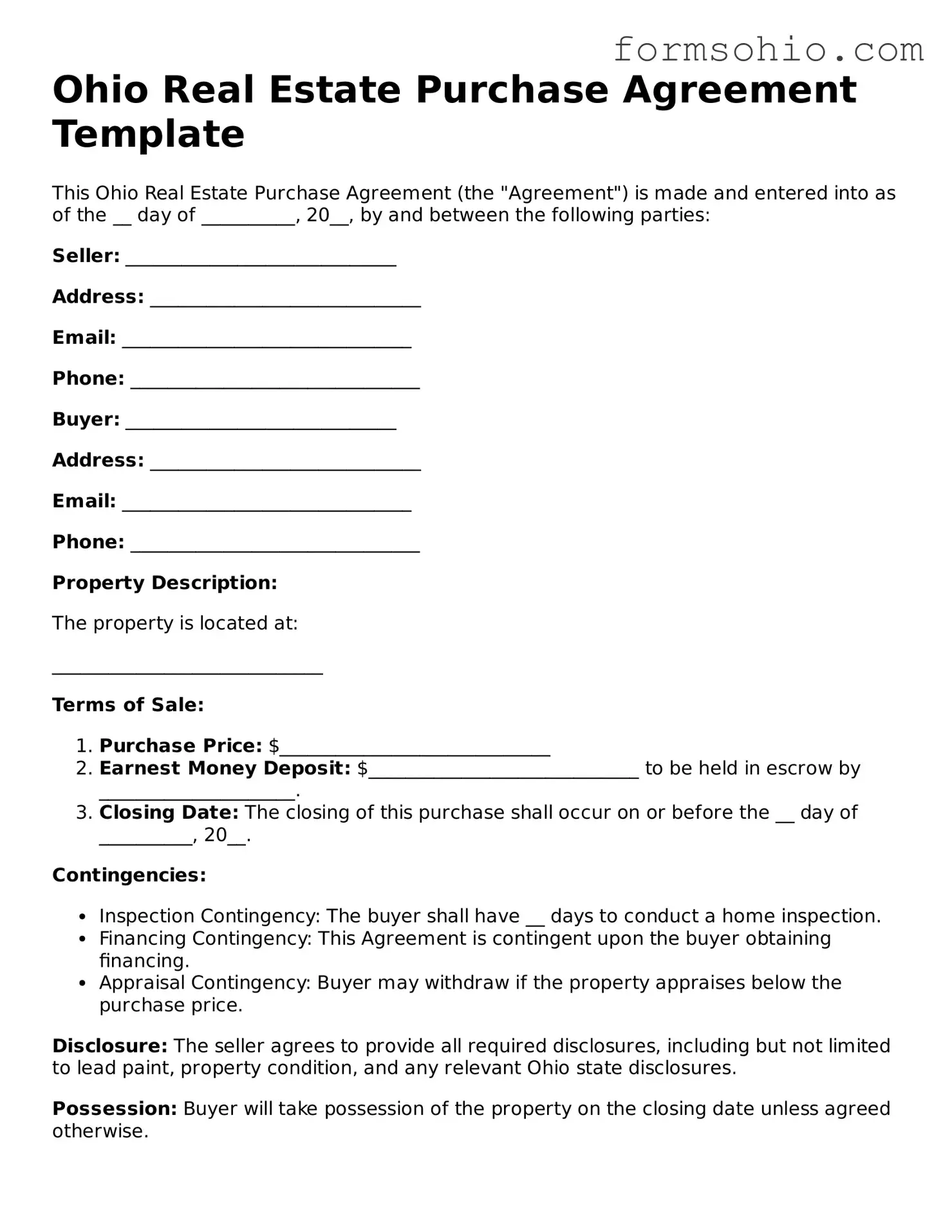Ohio Real Estate Purchase Agreement Template
This Ohio Real Estate Purchase Agreement (the "Agreement") is made and entered into as of the __ day of __________, 20__, by and between the following parties:
Seller: _____________________________
Address: _____________________________
Email: _______________________________
Phone: _______________________________
Buyer: _____________________________
Address: _____________________________
Email: _______________________________
Phone: _______________________________
Property Description:
The property is located at:
_____________________________
Terms of Sale:
- Purchase Price: $_____________________________
- Earnest Money Deposit: $_____________________________ to be held in escrow by _____________________.
- Closing Date: The closing of this purchase shall occur on or before the __ day of __________, 20__.
Contingencies:
- Inspection Contingency: The buyer shall have __ days to conduct a home inspection.
- Financing Contingency: This Agreement is contingent upon the buyer obtaining financing.
- Appraisal Contingency: Buyer may withdraw if the property appraises below the purchase price.
Disclosure: The seller agrees to provide all required disclosures, including but not limited to lead paint, property condition, and any relevant Ohio state disclosures.
Possession: Buyer will take possession of the property on the closing date unless agreed otherwise.
Governing Law: This Agreement shall be governed by and construed in accordance with the laws of the State of Ohio.
IN WITNESS WHEREOF, the parties have executed this Agreement as of the date first above written.
Seller's Signature: _____________________________
Date: ____________
Buyer's Signature: _____________________________
Date: ____________
